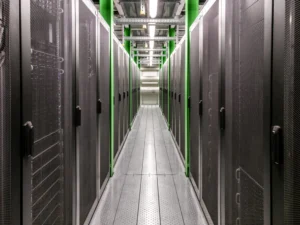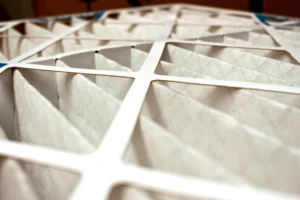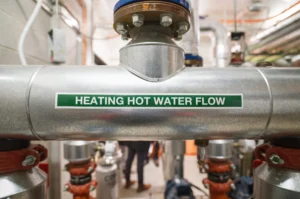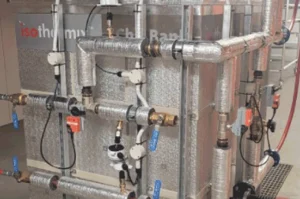-

The importance of external CFD for data centres
This paper discusses the growing importance of external CFD in evaluating and optimising rooftop mechanical layouts for high-density data centres.
-

Mitigating airborne pathogens indoors: A systematic review of existing and next-generation air cleaning technologies
This technical paper provides a systematic review and comparison of existing and next-generation air cleaning technologies.
-

Innovative space cooling and heating using an R744 heat pump: a comparative study
This paper by Alemu Tiruneh Alemu, M.AIRAH, and Julian Hudson, M.AIRAH, explores sustainable HVAC solutions by focusing on electrifying heating with heat pumps and operational cooling and heating efficiencies.
-

Techno-economic evaluation of integrating a PCM thermal battery into cooling systems (part 2)
This paper presents a techno-economic evaluation of a phase change material (PCM) thermal battery (TB) system developed through an industry-university cooperation project.
-

Techno-economic evaluation of integrating a PCM thermal battery into cooling systems
This paper presents a techno-economic evaluation of a phase change material (PCM) thermal battery (TB) system developed through an industry-university cooperation project.
-

Computational fluid dynamics modelling of ventilation in road tunnels: enhancing air quality and safety
Ventilation units within vehicle tunnels play a pivotal role in ensuring safety and optimal air quality for occupants. These units are used to assist with propelling air from one end to the opposite end of the tunnel. Computational fluid dynamics (CFD) has emerged as an invaluable design tool for engineers and stakeholders, offering simulated insights and data to optimise safety and efficiency in tunnel projects. This paper emphasises the advantages of CFD for road tunnel ventilation design, showcases a case study involving impulse fans, and highlights the positive effects on project costs and overall tunnel ventilation performance.
-

Semiconductor Heat Pumps – A New Approach to Zero Emissions Heating
As a result of the increased contribution of renewable energy for electricity generation and rising gas prices, there has been a shift from natural gas to electric-based heating in recent times. Commonly used electric heating technologies in the built environment include electric resistance, and air- or water-source heat pumps (hereafter known as “conventional heat pumps”). However, a key concern in the industry has been the use of refrigerants that have high Global Warming Potential (GWP) and other refrigerants that are flammable and/or toxic.
-

CFD Analysis of Fixture Output Impact on Upper Room Germicidal Ultraviolet Light System Performance
Ultraviolet germicidal irradiation (UVGI) using electromagnetic radiation in the UV‑C wavelength band of 200–280nm can prevent the reproduction of microorganisms. Several factors related to UV fixtures, HVAC layout and the resulting airflow flow patterns can affect the performance of upper‑room UVGI applications.
-

Striking a balance: planning and implementation considerations for natural gas removal in hospitals
This paper examines the challenges associated with removing natural gas from hospitals and transitioning to all-electric systems. It emphasises the unique energy requirements of hospitals and the need to prioritise patient care and safety over energy efficiency.
-

Developing a framework for delivering quality towards a sustainable built form future
-

Disaggregation of precipitation data applicable for climate‑aware planning
High-temporal-resolution precipitation data of the past along with other data of weather elements are required for applications in the design and simulation of built environments. However, the available data of precipitation is either low-resolution, e.g., daily, or not long enough to produce reliable and climate-responsive results for built environment applications.
-

Development of a whole-house energy rating tool for new housing
In 2019, Australian energy ministers agreed on the need for the Trajectory for Low Energy Buildings (the Trajectory). One of the key aspects in the Trajectory for residential buildings is to expand the Nationwide House Energy Rating Scheme (NatHERS) to offer nationally accredited whole-of-home (WoH) tools to enable compliance requirements in the National Construction Code (NCC).
-

Streamlining electrification in support of decarbonisation
Our industry has increasingly focused on the electrification of building utilities coupled with low-carbon electricity to support the global decarbonization effort. Examples include the University of California’s system-wide ban on the use of on-site fossil fuel combustion in new construction and major renovations, and the City of Seattle’s recently passed measure to prohibit the use of natural gas for space heating in new construction and major replacements of heating systems in commercial buildings, as well as for water heating in new hotels and large apartment buildings. This column presents an approach to integrating the production of domestic hot water with an electric heat-recovery chiller plant as a streamlined solution.
-

Feasibility study of wastewater energy transfer for an existing campus building cluster
The HVAC-related energy usage of a group of three existing buildings on a Canadian university campus (the “Cluster”) was simulated. Two scenarios were compared: (1) an ambient loop paired with conventional HVAC equipment (boiler plant and cooling tower), and (2) an ambient loop using wastewater energy transfer (“WET”). The study aimed to assess the feasibility of implementing WET as a heating and cooling method for cold-climate institutional buildings, as well as to measure the effects of WET implementation on energy usage, greenhouse gas emissions, and energy costs
-

Pushing the boundaries of net zero in the Australian outback
Using a hybrid of dynamic thermal simulation and detailed hourly spreadsheet calculations, the analysis identified design and operation strategies to size PV and batteries for various degrees of grid independence.
-

Optimisation of Economy Cycle Operation and Supply Air Temperature Control for VAV systems
In the future, many Australian HVAC systems may be required to deal with harsher environmental conditions due to more extreme climatic conditions and a push to increase population centres in more northern and central regions of the country.
-

Minimising transmission in high occupant density settings, part 1
-

Exploring the potential of personal radiant cooling systems
In the future, many Australian HVAC systems may be required to deal with harsher environmental conditions due to more extreme climatic conditions and a push to increase population centres in more northern and central regions of the country.
-

From device to the cloud: approaches and challenges in getting HVAC&R data from remote devices
There is strong demand for HVAC&R monitoring and metering solutions that incorporate cloud data collection and real-time or near-real-time cloud-based control. This is enabled by reductions in the cost of sensors and meters, advances in communication technologies, the development of the Internet of Things (IoT) as a lower-cost alternative to traditionally vertically integrated systems, and the move to more frequent data collection.
-

Next-generation fault detection for commercial building HVAC systems
Modern commercial buildings are becoming more complicated as the number of sensors, actuators and control loops increases. The building management system (BMS) used to control these components will often generate equipment faults and anomalous behaviour, which causes energy waste, thermal discomfort, and drives up maintenance costs. Such system failures may last for a long time before a facility manager or technician notices them. This necessitates the use of automated fault detection and diagnostics (AFDD) tools to detect operational faults and identify their root causes to ensure fault-free operation.